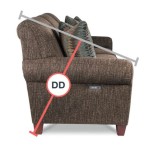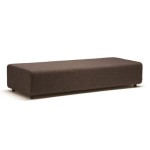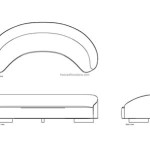How To Recycle Your Old Sofa: A Comprehensive Guide
Discarding a sofa can present a significant challenge. Sofas are bulky, often heavy, and contain materials that contribute to landfill waste and environmental degradation. Recycling an old sofa, however, offers a sustainable alternative to simply throwing it away. This article provides a comprehensive guide to the various options and considerations involved in recycling your old sofa.
Assessing Your Sofa's Condition and Material Composition
Before exploring recycling options, it’s crucial to assess the overall condition of the sofa. This assessment determines the best course of action, ranging from donation to complete dismantling for material recycling. Factors to consider include:
Structural Integrity: Evaluate the soundness of the frame. Are there broken legs, significant structural damage, or instability? A structurally compromised sofa may be unsuitable for donation or resale.
Upholstery Condition: Examine the fabric for tears, stains, excessive wear, or pet damage. Minor imperfections might be acceptable for certain donation programs, but significant damage will limit reuse options.
Presence of Mold or Infestation: Carefully inspect the sofa for signs of mold, mildew, or insect infestation (e.g., bed bugs, carpet beetles). Sofas with these issues are generally not recyclable or suitable for reuse due to health and safety concerns.
Material Composition: Identify the materials used in the sofa's construction. Common materials include wood (frame), foam (padding), fabric (upholstery), metal (springs and mechanisms), and potentially synthetic fibers and fillers. This information is vital for determining suitable recycling pathways. Older sofas might contain materials that are difficult or impossible to recycle using current technologies.
Understanding the sofa's composition and condition will guide the decision-making process and ensure that the chosen recycling method is appropriate and effective.
Exploring Donation and Resale Options
If the sofa is in relatively good condition, donation or resale are preferable pathways to recycling. These options extend the sofa's lifespan and reduce the demand for new furniture production, conserving resources and minimizing environmental impact.
Donation to Charities: Several charitable organizations accept furniture donations, providing them to individuals and families in need. Organizations like Goodwill, Salvation Army, and Habitat for Humanity often have furniture donation programs. Before donating, contact the organization to confirm acceptance criteria and any specific requirements, such as pick-up services or drop-off locations. Some charities may have restrictions on accepted sizes, styles, or conditions of furniture.
Local Shelters and Non-Profits: Local homeless shelters, domestic violence shelters, and refugee resettlement programs frequently need furniture donations. Contacting these organizations directly can provide an opportunity to support your community while responsibly disposing of your sofa. Again, it is important to inquire about specific needs and acceptance policies.
Online Marketplaces and Classifieds: Platforms like Craigslist, Facebook Marketplace, and Freecycle offer opportunities to sell or give away your sofa locally. This option allows you to connect directly with potential recipients and arrange for pickup or delivery. Be transparent about the sofa's condition in the listing and provide accurate photos to avoid misunderstandings. Consider offering the sofa for free if you primarily want to avoid landfill disposal.
Consignment Shops: Some consignment shops specialize in furniture and home décor. If your sofa is in good condition and meets the shop's aesthetic and quality standards, consignment can be a profitable way to recycle it. The shop will display and sell the sofa, sharing a percentage of the sale price with you. This option requires more effort, as you'll need to transport the sofa to the shop and potentially wait for it to sell.
When considering donation or resale, cleaning the sofa thoroughly is essential. This increases its appeal and improves its chances of being accepted by a charity or purchased by a buyer. Deep clean the upholstery, remove any stains, and address any minor repairs before offering the sofa for reuse.
Dismantling and Material-Specific Recycling
If donation or resale are not viable options due to the sofa's condition, dismantling it for material-specific recycling becomes the next best approach. This process involves carefully separating the sofa into its constituent materials and then recycling each material according to its specific requirements. This method requires more effort but significantly reduces landfill waste.
Wood Recycling: The wooden frame is often the most substantial component of a sofa. If the wood is untreated and free of contaminants, it can be recycled into wood chips, mulch, or other wood products. Check with local recycling centers or wood recycling facilities to determine their acceptance policies. Treated wood, such as that used in some older sofas, may require special handling due to the presence of preservatives.
Metal Recycling: Metal springs, mechanisms, and fasteners can be recycled at metal recycling facilities. Separate the metal components from the rest of the sofa and remove any attached fabric or foam. Metal recycling is a well-established process, and most metal recycling facilities accept a wide range of metal types.
Foam Recycling: Foam padding is often made from polyurethane foam, which can be recycled, although the process is not as widely available as wood or metal recycling. Some specialized foam recycling facilities can process used polyurethane foam into new products. Search for foam recycling facilities in your area or contact local waste management authorities for information on foam recycling options.
Fabric Recycling: Fabric upholstery can be recycled, although the availability of fabric recycling programs varies. Some textile recycling companies accept used upholstery fabric for processing into new textiles or other products. Alternatively, the fabric can be repurposed for other uses, such as cleaning rags or craft projects. Consider donating usable fabric scraps to schools or community centers for creative projects.
Dealing with Synthetic Materials: Some sofa components, such as certain types of synthetic fibers and fillers, may be difficult or impossible to recycle using current technologies. These materials may need to be disposed of in a landfill. However, always explore all available recycling options before resorting to landfill disposal. Contacting local waste management authorities can provide information on specific waste disposal guidelines and any available recycling programs for difficult-to-recycle materials.
Dismantling a sofa can be a labor-intensive process and requires appropriate tools and safety precautions. Wear gloves and eye protection when handling potentially sharp materials, such as metal springs and fasteners. Dispose of any hazardous materials, such as paints or adhesives, according to local regulations.
By dismantling the sofa and recycling its constituent materials, individuals can significantly reduce the environmental impact of sofa disposal and contribute to a more sustainable waste management system.
Ultimately, the best method for recycling a sofa depends on its condition, material composition, and local recycling infrastructure. Thorough assessment and careful planning are essential for ensuring that the sofa is disposed of responsibly and sustainably.

How To Dispose Of Your Old Sofa Fella Design

Lose It How To Reuse Recycle Or Replace Your Sofa
Diy Ways To Recycle A Redundant Couch Junk Frog

How To Dispose Of Your Old Sofa Fella Design

13 Modern Ways To Recycle Your Old Furniture Conserve Energy Future

5 Best Ways To Dispose Of Your Sofa

How To Get Rid Of Used Furniture Recycle Coach

Couch Removal Think Twice Before Tossing Old Furniture

7 Ways To Repurpose Upholstery Fabric From Old Couches One Green Planet

How To Dispose Of An Old Sofa Ethical Shift








